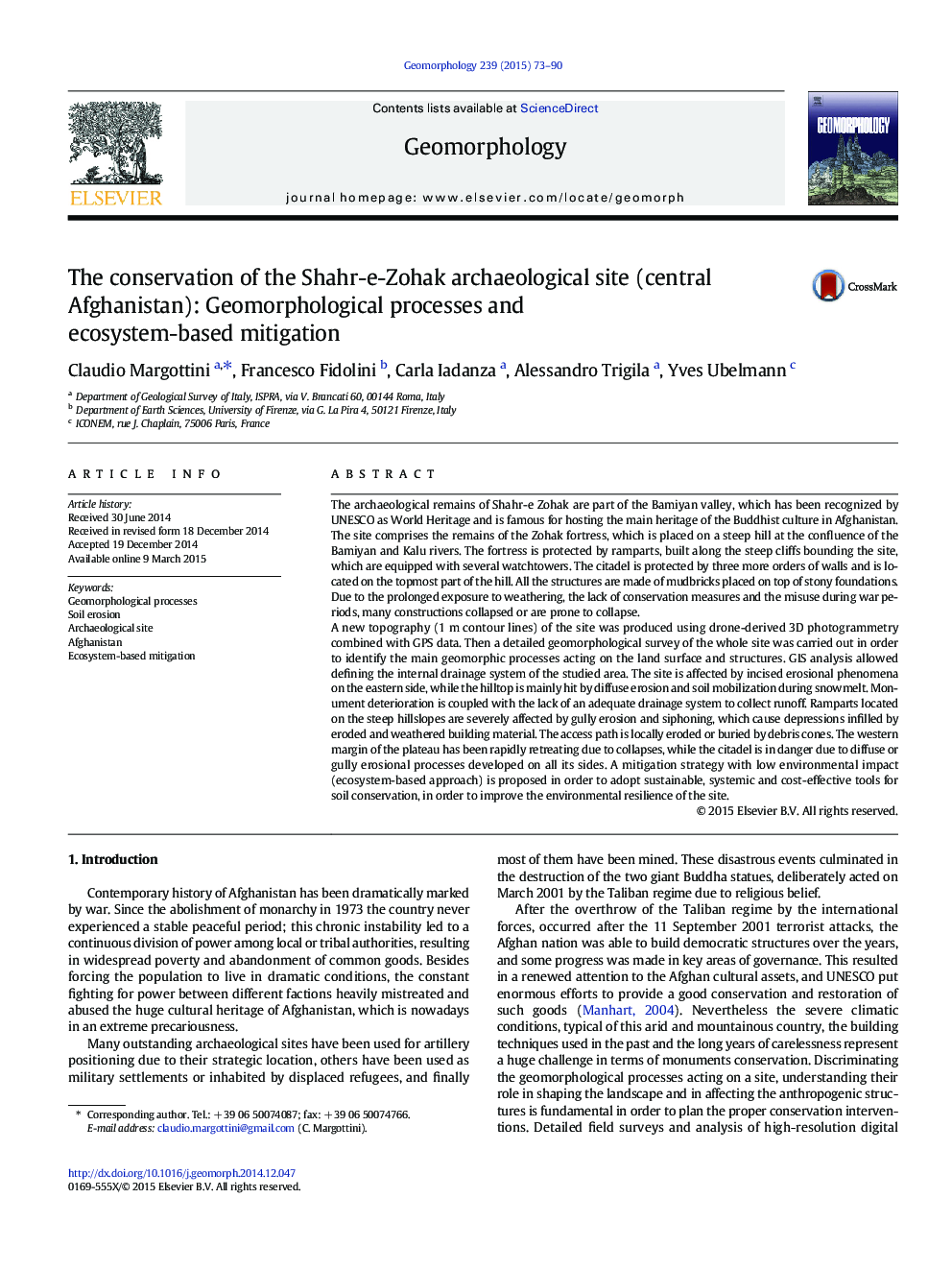| کد مقاله | کد نشریه | سال انتشار | مقاله انگلیسی | نسخه تمام متن |
|---|---|---|---|---|
| 4684284 | 1635410 | 2015 | 18 صفحه PDF | دانلود رایگان |
• The XIII c. Afghan fortress of Shahr-e-Zohak is placed on a steep hill.
• The edges are affected by severe erosional phenomena, gullies and siphoning.
• The hilltop is mainly hit by diffuse erosion and soil mobilization.
• Monument deterioration is coupled with the lack of an adequate drainage system.
• An ecosystem-based mitigation strategy have been proposed, to reduce severe erosion.
The archaeological remains of Shahr-e Zohak are part of the Bamiyan valley, which has been recognized by UNESCO as World Heritage and is famous for hosting the main heritage of the Buddhist culture in Afghanistan. The site comprises the remains of the Zohak fortress, which is placed on a steep hill at the confluence of the Bamiyan and Kalu rivers. The fortress is protected by ramparts, built along the steep cliffs bounding the site, which are equipped with several watchtowers. The citadel is protected by three more orders of walls and is located on the topmost part of the hill. All the structures are made of mudbricks placed on top of stony foundations. Due to the prolonged exposure to weathering, the lack of conservation measures and the misuse during war periods, many constructions collapsed or are prone to collapse.A new topography (1 m contour lines) of the site was produced using drone-derived 3D photogrammetry combined with GPS data. Then a detailed geomorphological survey of the whole site was carried out in order to identify the main geomorphic processes acting on the land surface and structures. GIS analysis allowed defining the internal drainage system of the studied area. The site is affected by incised erosional phenomena on the eastern side, while the hilltop is mainly hit by diffuse erosion and soil mobilization during snowmelt. Monument deterioration is coupled with the lack of an adequate drainage system to collect runoff. Ramparts located on the steep hillslopes are severely affected by gully erosion and siphoning, which cause depressions infilled by eroded and weathered building material. The access path is locally eroded or buried by debris cones. The western margin of the plateau has been rapidly retreating due to collapses, while the citadel is in danger due to diffuse or gully erosional processes developed on all its sides. A mitigation strategy with low environmental impact (ecosystem-based approach) is proposed in order to adopt sustainable, systemic and cost-effective tools for soil conservation, in order to improve the environmental resilience of the site.
Journal: Geomorphology - Volume 239, 15 June 2015, Pages 73–90
